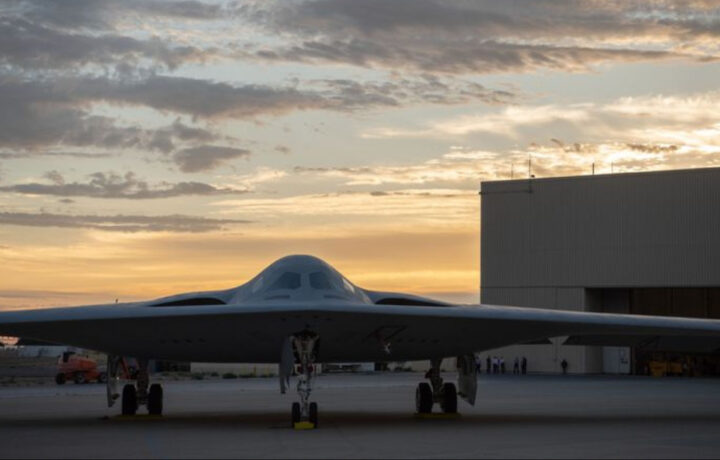The United States Air Force will receive the first pair of fully operational Northrop Grumman B-21 Raider strategic bombers next year. Although the aircraft will be employed in testing, both will be “combat capable” if the need should arise. A dual-capable penetrating strike stealth aircraft, the B-21 will be capable of delivering both conventional and nuclear munitions.
Six prototype B-21s were manufactured, rolling off the same lines at Air Force Plant 42 in Palmdale, California, using the same tools and processes that began building the production aircraft in early 2024 when the Raider entered low-rate initial production (LRIP). Some of the same facilities at Plant 42 had been used to produce the Northrop B-2 Spirit bombers, although just 21—including a single prototype—were built for the United States Air Force.
By contrast, the Pentagon has called for at least 100 Raiders to be manufactured, with some experts arguing that a larger fleet of 225-250 bombers is needed for a potential conflict with a near-peer adversary such as China.
Northrop Grumman had initially planned to produce seven or eight B-21 bombers annually under the LRIP; however, it is unclear if this goal is close to being met. As it moves to full-rate production (FRP), as many as 10 units could be built per year. According to a report from Air & Space Forces magazine, the Congressional Reconciliation bill for 2026 included a funding increase for B-21 production; however, it is unclear if the work would be handled at the existing Palmdale campus.
Approximately 8,000 employees of Northrop Grumman and various other defense contractors, spanning a range of sizes and operating across 40 states, have been actively working on the Air Force’s new stealth bomber. The Tier 1 suppliers include BAE Systems, Collins Aerospace, GKN Aerospace, Spirit AeroSystems, and Pratt & Whitney, which produces the aircraft’s engines.
The reconciliation bill provided $4.5 billion for expanded manufacturing.
Great efforts have been taken to prevent China and other potential adversaries from gaining access to its technology.
Working to the IOC
The United States Air Force hasn’t confirmed when the B-21 Raider will reach Initial Operational Capability (IOC), and it will be determined by the Air Force Global Strike Command (AFGSC). The current timeline still calls for the Raider to replace the aging B-2 Spirit and the even older Rockwell B-1B Lancer beginning in the early 2030s.
The Raider will, however, serve alongside the older still Boeing B-52 Stratofortress, with the Cold War-era workhorse likely flying until the early 2050s, a full century since it first entered service.
It will be one of the longest active military programs in the history of the United States, serving longer than even the Colt M1911 handgun, introduced in 1911 and remaining the standard sidearm until 1985. That doesn’t count the US Navy’s USS Constitution, one of the six original frigates authorized by Congress, which remains the oldest commissioned warship afloat.
New Home is Being Made Ready
Ellsworth Air Force Base (AFB), SD, continues to prepare to become the permanent home for the next-generation Raider. To help streamline efforts, earlier this year, the base temporarily relocated its 17 Rockwell B-1B Lancers to Grand Forks AFB, ND.
Upgrades to Ellsworth include the construction of a new runway, additional hangars, and other facilities.
The base, located near Rapid City, is already one of the largest employers in South Dakota. According to a 2017 estimate, it had an annual economic impact of over $350 million. However, it was almost shut down, and in 2005, it was even briefly on the Pentagon’s list of military bases that should be closed or relocated.
However, in March 2019, it was selected as the preferred base to host the first Raider bomber unit and the first formal training unit.
Last year, the second and third basing locations were confirmed, including Whiteman AFB, MO, the home of the Air Force’s fleet of B-2 Spirit bombers, and Dyess AFB, TX, which is currently the other home base for the B-1B Lancer.



